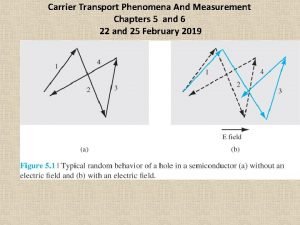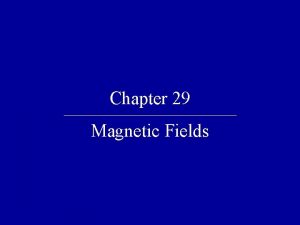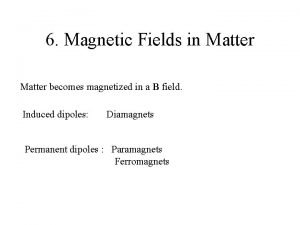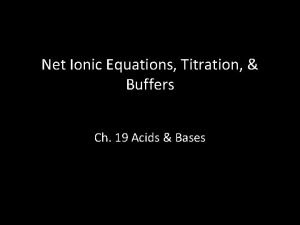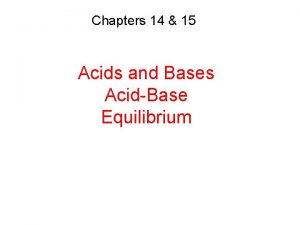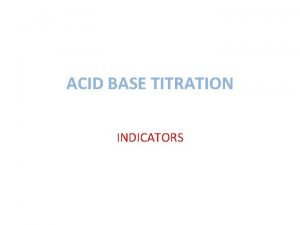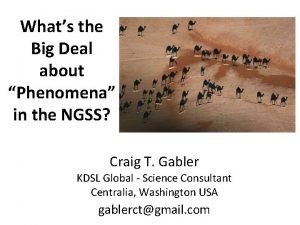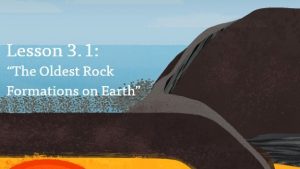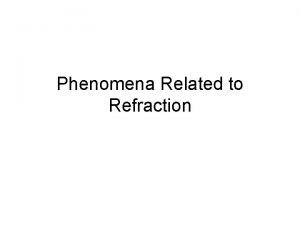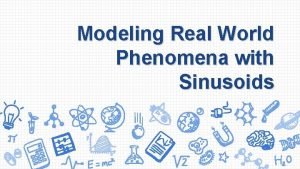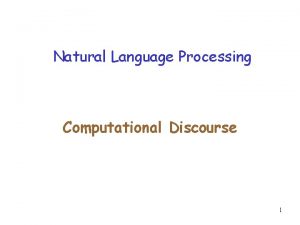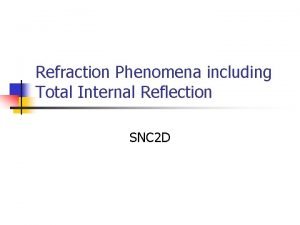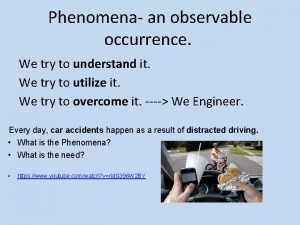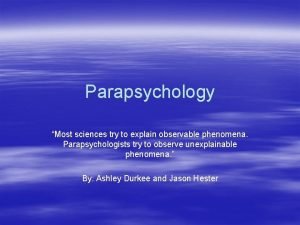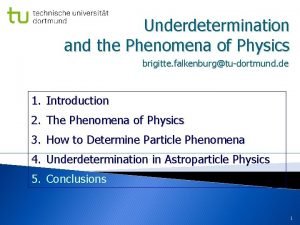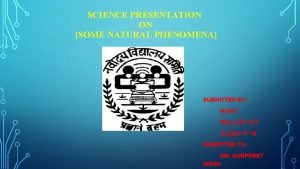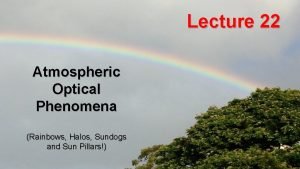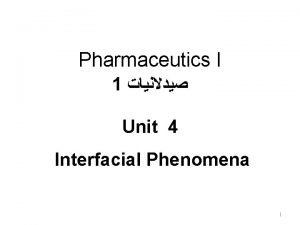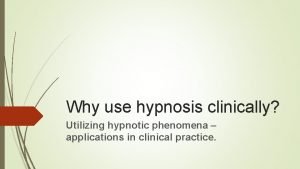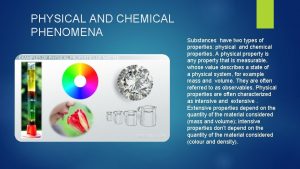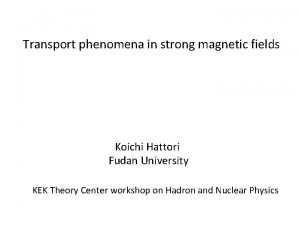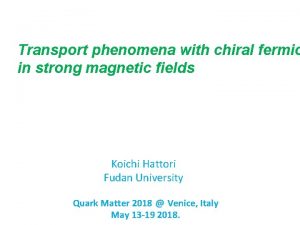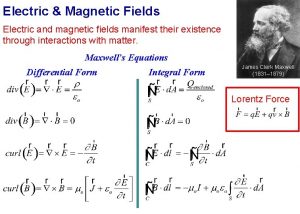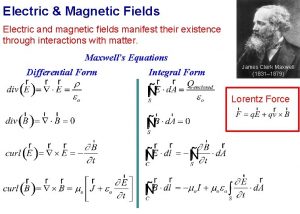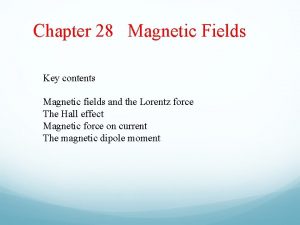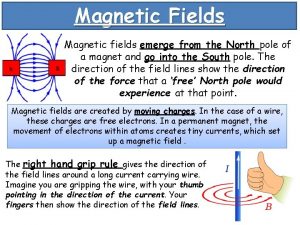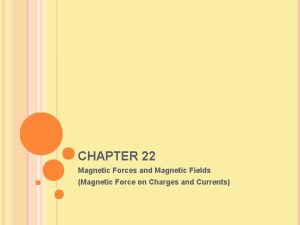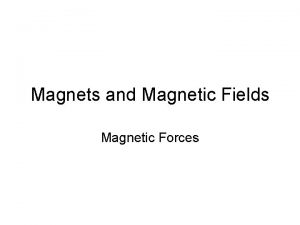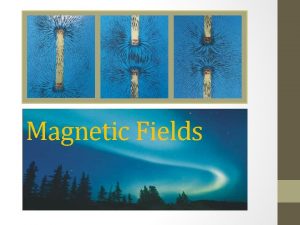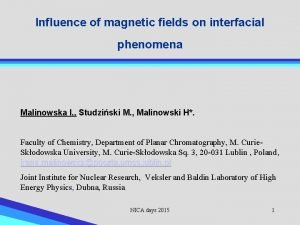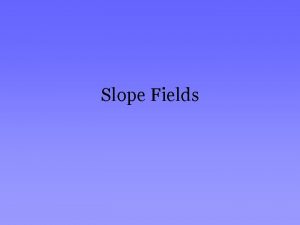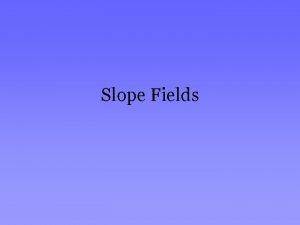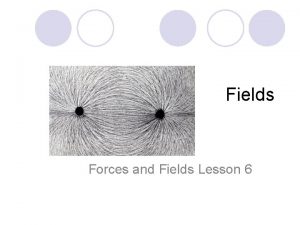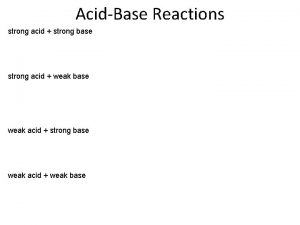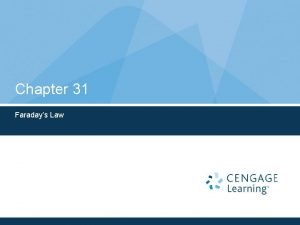Transport phenomena in strong magnetic fields Koichi Hattori

















































- Slides: 49

Transport phenomena in strong magnetic fields Koichi Hattori Fudan University 6 th Huada QCD School @ CCNU, May, 2017

Table of contents 0. Analytic estimate of B-field in HIC KH and Xu-Guang Huang (Fudan), ar. Xiv: 1609. 00747 [nucl-th] 1. Heavy Quark Diffusion Dynamics in QGP K. Fukushima (Tokyo), KH, H. -U. Yee (UIC), Yi Yin (MIT), PRD. [ar. Xiv: 1512. 03689 [hep-ph]] Cf. ) KH and Xu-Guang Huang (Fudan), ar. Xiv: 1609. 00747 [nucl-th] 2. Electrical conductivity in QGP KH, Shiyong Li (UIC), Daisuke Satow (Frankfurt), Ho-Ung Yee, PRD. ar. Xiv: 1610. 06839 [hep-ph] KH and Daisuke Satow, PRD. [ar. Xiv: 1610. 06818 [hep-ph]] 3. New magneto-hydrodynamic instability in a chiral fluid with CME KH, Yuji Hirono (BNL), Ho-Ung Yee, and Yi Yin, In preparation.

Analytic estimate of the strong B -- Impact parameter dependences B W. -T. Deng & X. -G. Huang, KH and X. -G. Huang

Time dependences Collision-energy dependences V. Voronyuk, et al. (2011)

1. Heavy quark diffusion in magnetic fields K. Fukushima (Tokyo), KH, H. -U. Yee (UIC), Yi Yin (BNL MIT), Phys. Rev. D 93 (2016) 074028. [ar. Xiv: 1512. 03689 [hep-ph]]

Heavy quarks as a probe of QGP g g B Thermal Quark-Gluon Plasma (QGP) Non-thermal heavy-quark production in hard scatterings Hadrons RHIC Momentum distribution of HQs in log scale Initial distribution (τ = 0) from p. QCD Thermal (τ = ∞) Relaxation time is controlled by transport coefficients (Drag force, diffusion constant) LHC

Heavy quark (HQ) dynamics in the QPG -- In soft regime Langevin equation Random kick (white noise) Drag force coefficient: ηD Diffusion constant: κ Einstein relation Perturbative calculation by finite-T field theory (Hard Thermal Loop resummation) LO and NLO without B are known (Moore & Teaney, Caron-Huot & Moore).

Perturbative computation of momentum diffusion constant Momentum transfer rate in the LO Coulomb scatterings 2 2 + HQ Thermal quarks HQ Thermal gluons c. f. ) LO and NLO without B (Moore & Teaney, Caron-Huot & Moore) Effects of a strong magnetic field (e. B >> T^2) 1. Modification of the dispersion relation of thermal quarks 2. Modification of the Debye screening mass

Landau level discretization due to the cyclotron motion B “Harmonic oscillator” in the transverse plane Nonrelativistic: Cyclotron frequency Relativistic: In addition, there is the Zeeman effect.

Schematic picture of the lowest Landau levels (1+1)-D dispersion relation Squeezed wave function Strong B

Prohibition of the longitudinal momentum transfer Massless limit Linear dispersion relation Energy and momentum transfers in the direction of B From the chirality conservation HQ Light quark In the static limit (or HQ limit)

Screening effect in a strong B Gluon self-energy Schwinger model Strong B

Transverse diffusion constant in massless limit Distribution of the quark scatterers Screened Coulomb scattering amplitude (squared) Spectral density

Longitudinal diffusion constant 1. Quark contribution to the longitudinal diffusion constant 2. Gluon contribution to the longitudinal diffusion constant Same as Moore & Teaney up to constants

Anisotropic momentum diffusion constant Remember the density of states in B-field, In the strong field limit,

Implication for v 2 of heavy flavors Magnetic anisotropy gives rise to v 2 of HQs even without the v 2 of medium. Possible to generate v 2 of HQs in the early QGP stage.

2. Electrical conductivity in strong magnetic field KH, Shiyong Li, Daisuke Satow, and Ho-Ung Yee, ar. Xiv: 1610. 06839 [hep-ph]. KH and Daisuke Satow, ar. Xiv: 1610. 06818 [hep-ph]. Ideal Dissipation V Quarks live in (1+1) D Gluons live in (3+1) D Strong B

“Longitudinal conductivity” in the strong B Current only in z direction (1+1)-D effective Boltzmann eq. Total current integrated over pz

How linearized Boltzmann eq. works Stationary and homogeneous limit External driving force v. s. Relaxation Collision term: e. g. , relaxation time approximation Linearized Boltzmann eq. Solution E field

Quark-damping mechanism in magnetic fields Finite B opens 1 -2 processes

Chirality selection in the massless limit Chirality conservation at the vertex Right handed “Gluon mass” The quark damping rate is i) order g^2 ii) proportional to the small mass. Gluon emission in a collinear configuration Transverse polarizations

Results AMY (Arnold, Moore, Yaffe) + Density of states + Chirality conservation in 1 -2 (2 -1) processes + IR cutoff M 2~αs*e. B Transition from strong B (LLL) to weak B (h. LL).

From Daisuke Satow’s slides

From Daisuke Satow’s slides

3. New magnetohydrodynamic instability in a chiral fluid with CME KH, Yuji Hirono, Ho-Ung Yee, and Yi Yin, In preparation.

Magneto-hydrodynamics (MHD) in conducting plasmas Alfven’s theorem = “Frozen-in” condition: Magnetic flux is frozen in a fluid volume and moves together with the fluid. Transverse fluctuation Oscillation Tension of B-field = Restoring force Fluid mass density = Inertia Transverse Alfven wave

Alfven wave from a linear analysis Navier-Stokes + Maxwell eqs. Stationary solutions Transverse perturbations as functions of z. Wave equation Transverse wave propagating along background B 0 Alfven wave velocity Same wave equation for δv Fluctuations of B and v propagate together.

Anomalous MHD in conducting plasmas A finite CME current without CVE: Wave equation and a similar wave equation for δv. Helicity decomposition (Circular R/L polarizations) Two modes for each helicity propagating in parallel to B AND in antiparallel to B. In total, there are 4 modes.

R-helicity Exponential growth L-helicity Always damping

Helicity conversions Chiral imbalance btw R and L fermions Chiral Plasma Instability (CPI) Akamatsu, Yamamoto Hirono, Kharzeev, Yin Xia, Qin, Wang Magnetic helicity Fluid helicity (structures of vortex strings)

Summary 1 The chirality selection plays crucial roles in the non-anomalous transports as well as in the anomalous transports. Consequences of the chirality selections HQ diffusion: Electrical conductivity:

Summary 2 We observed an onset of instabilities in both B and fluid velocity v in anomalous hydrodynamics, when a chiral imbalance induces a CME current. Amplitudes of both B and v grow exponentially in time. Stay tuned for more results in publication.



Consistent result from diagrammatic calculation Response function KH, D. Satow Kubo formula Divergence in free theory Regularized by quark damping rate No need to resum the pinch singularities in the present case + + + ・・・

3. Anomalous transports from magneto-vorticity coupling KH and Yi Yin, Phys. Rev. Lett. 117 (2016) 15. [ar. Xiv: 1607. 01513 [hep-th]]

Strong magnetic field & vorticity/angular momentum induced by heavy-ion collisions B ω =∇×vfluid Super-strong B Impact parameter Deng & Huang (2012), KH & Huang (2016) Skokov et al. (2009), Voronyuk et al. (2011), Bzdak, Skokov (2012) Mc. Lerran, Skokov (2014) Vorticity in HIC Pang, Petersen, Wang (2016) Becattini et al. , Csernai et al. , Huang, Huovinen, Wang Jiang, Lin, Liao(2016) Deng, Huang (2016)

Anomaly-induced transports in a magnetic OR vortex field Coefficients are time-reversal even. Non-dissipative transport phenomena is due to topology in quantum anomaly and is nonrenormalizable. Anomaly relation:

Spin polarizations from spin-rotation coupling Λ polarization See talks by Becattini, Niida, Konyushikhin, Li Becattini et al. , Glastad & Csernai, Gyulassy & Torrieri, Xie, , Slide by M. Lisa

An interplay B ⊗ ω For dimensional reason, one would get Cf. , In CVE, it was # Could the magneto-vorticity coupling be important ? ? QFT with Kubo formula Anomalous hydrodynamics due to Son and Surowka Anomalous transports Chiral kinetic theory Yes, it is important when B is so strong that B >> O(∂1). Q 1. Is the coefficient related to any quantum anomaly? Q 2. How is T and/or μ dependence?

Consequences of a magneto-vorticity coupling

Shift of thermal distribution functions by the spin-vorticity coupling Spin-vorticity coupling Landau & Lifshitz, Becattini et al. In the LLL, the spin direction is aligned along the magnetic field. - for particle + for antiparticle Number density At the LO in the energy shift Δε

The shift is independent of the chirality, and depends only on the spin direction. In the V-A basis, Spatial components of the current ½ from the size of the spin The shift depends on the chirality through the velocity. In the V-A basis,

Field-theoretical computation by Kubo formula Perturbative ω in a strong B LLL fermions Similar to the Kubo formula used to get the T 2 term in CVE (Landsteiner, Megias, Pena-Benitez) We confirm 1. the previous results obtained from the shift of distributions. 2. a relation of <n. V T 02> to the chiral anomaly diagram in the (1+1) dim. There is no T or μ correction in the massless limit, since it is related to the chiral anomaly!

Summary 2 A magneto-vorticity coupling B ⊗ ω induces charge redistributions without μA. - Related to the chiral anomaly in the (1+1) dimensions. - No T or μ correction. + + R R + L R R L L - B Coupling between the CME and fluid velocity induces a new instability in MHD. Take by Y. Hiron. KH, Hirono, Yee, Yin, In preparation.



Field-theoretical computation by Kubo formula There is no T or μ correction in the massless limit! Consistent with the previous observation from the shift of distributions.

Causality problem: A rigid rotation of an infinite-size system breaks causality in the peripheral region. One must have a finite-size system with an exterior boundary or a local vortex field. L Local shift of the charge density Redistribution of charge in the system R
 Be strong be strong be strong in the lord
Be strong be strong be strong in the lord Red fields to green fields
Red fields to green fields Carrier transport phenomena
Carrier transport phenomena Business research methods lecture notes ppt
Business research methods lecture notes ppt How to pronounce comprehensible
How to pronounce comprehensible Magnetic force quiz
Magnetic force quiz Learning: module 26: magnetic forces and fields
Learning: module 26: magnetic forces and fields Electric currents and magnetic fields
Electric currents and magnetic fields Lesson outline lesson 1 magnets and magnetic fields
Lesson outline lesson 1 magnets and magnetic fields Visualizing magnetic field
Visualizing magnetic field Magnetic fields in matter
Magnetic fields in matter Difference between strong and weak acid
Difference between strong and weak acid Neutralization equation
Neutralization equation Weak acid strong base titration curve
Weak acid strong base titration curve How to remember strong acids and strong bases
How to remember strong acids and strong bases Strong base strong acid
Strong base strong acid Nh4cl strong or weak acid or base
Nh4cl strong or weak acid or base Magnetic moment and magnetic field relation
Magnetic moment and magnetic field relation F=i(lxb)
F=i(lxb) Magnetic permeability of materials
Magnetic permeability of materials Units for magnetic flux density
Units for magnetic flux density Now answer the questions
Now answer the questions Bioflix activity membrane transport active transport
Bioflix activity membrane transport active transport Active transport vs passive transport venn diagram
Active transport vs passive transport venn diagram Passive trnasport
Passive trnasport Antiporter
Antiporter Pinocytosis vs phagocytosis
Pinocytosis vs phagocytosis Selectively permeable definition biology
Selectively permeable definition biology Membrane structures that function in active transport
Membrane structures that function in active transport Primary active transport vs secondary active transport
Primary active transport vs secondary active transport Noumena vs phenomena
Noumena vs phenomena Anchor phenomenon
Anchor phenomenon Refraction phenomena
Refraction phenomena Global climate phenomena
Global climate phenomena Examples of sinusoidal functions in real life
Examples of sinusoidal functions in real life Reference phenomena in nlp
Reference phenomena in nlp Moose monikko
Moose monikko Critical angle
Critical angle Observable phenomenon
Observable phenomenon Observable phenomenon
Observable phenomenon What is the meaning of phenomena
What is the meaning of phenomena Surface phenomena and colloidal system
Surface phenomena and colloidal system Natural phenomena ppt
Natural phenomena ppt Optical phenomena rainbow
Optical phenomena rainbow Surface and interfacial phenomena
Surface and interfacial phenomena Random phenomena
Random phenomena Objective consideration of contemporary phenomena
Objective consideration of contemporary phenomena Noumena vs phenomena
Noumena vs phenomena Is gravity a natural phenomenon
Is gravity a natural phenomenon Physical and chemical phenomena
Physical and chemical phenomena


